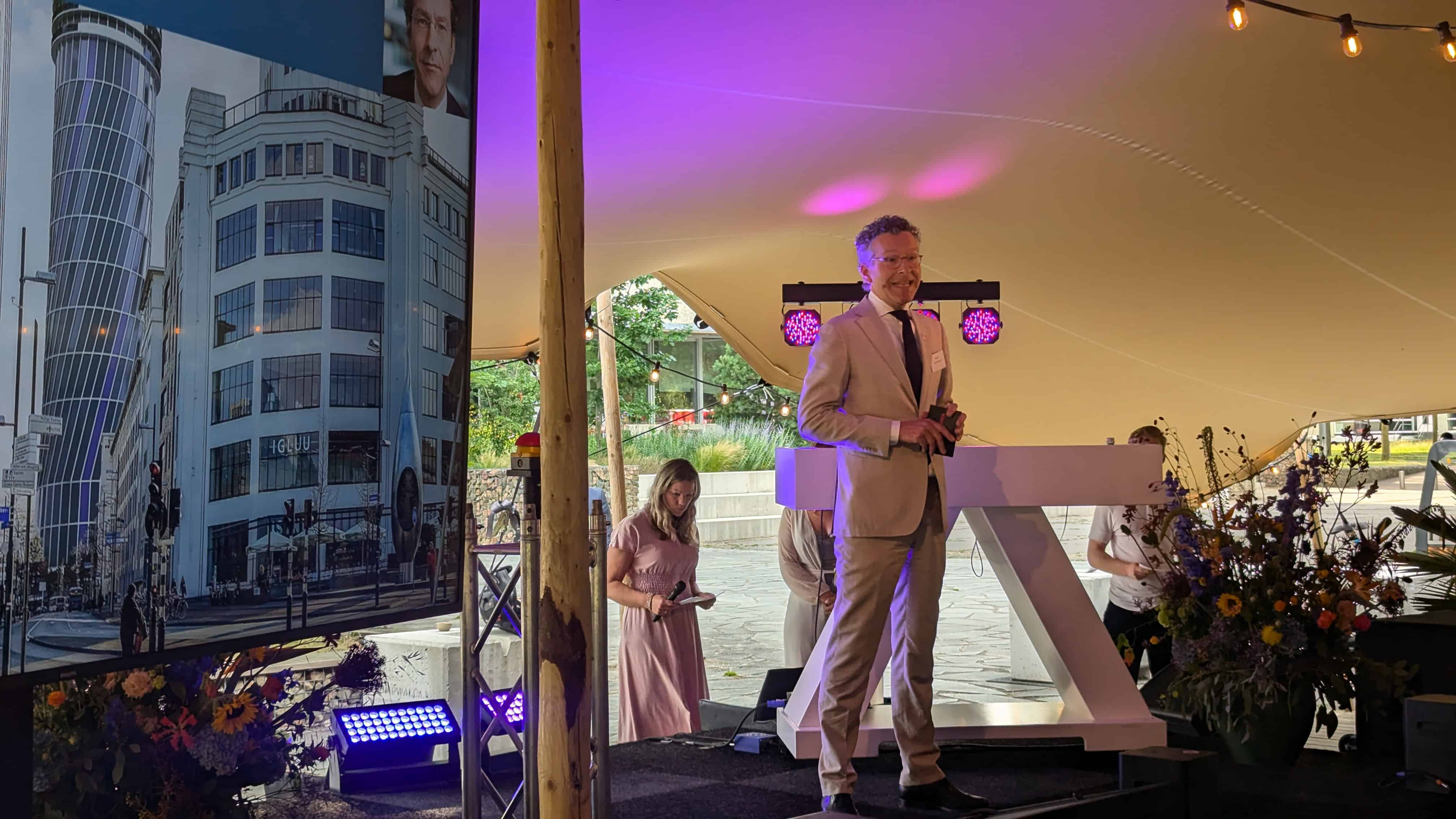Aircision, a high-tech company of Eindhoven’s start-up accelerator HighTechXL, will receive additional support for testing its 5G communication technology based on Free Space Optics (FSO) laser technology. VTEC is also involved in the pilot. For the Metropolitan region Eindhoven, the project was so ambitious that it became one of the 24 initiatives supported in the most recent funding round with amounts up to 50,000 euros. Eindhoven alderman Stijn Steenbakkers handed over the corresponding check last week.
The pilot takes place partly at the properties of the Dutch army and partly in Aircision’s own weather chamber at the High Tech Campus Eindhoven. The technique originates from the collaboration between the European research institute CERN and HighTechXL.
In 2024, the amount of data exchanged between mobile devices will be 10 times more than in 2018, specialists expect. Telecom companies need to come up with solutions to meet the growing demand, which is why they are insisting on the roll-out of 5G infrastructure. 5G will offer a larger bandwidth but does not have the same range as 4G. In order to provide approximately the same coverage over larger areas, two to three times more cell towers are needed than are currently present, so additional construction will be necessary. These towers must be connected to each other. FSO-Communication offers the possibility of using laser technology to facilitate 5G communication over long distances, without the need for cabling in the ground.
Aircision offers both communication and metrological solutions using laser technology. Its communication system is based on line-of-sight laser technology, which has the potential to improve the network connection in areas where expansion can be problematic. This is particularly effective for the roll-out of 5G, which requires many more transmission masts. Where fiber optic connections are not possible, laser radiation can be a solution. “Fiber optics remain ideal for this, but in places without fiber optics, we can take care of connections to the transmitter,” says Aircision CEO John Reid.
The first demo set up should be ready in August; if the tests go well, a larger-scale trial with a large telecom provider can take place before the end of the year. According to Reid, the light beams used are perfectly safe. “The density of the beam is low enough for humans to be able to even look into it without damaging your eye.”
MaxWaves
Aircisions (patented) FSO system is not the only way to solve the problem of the connection between two transmitters. MaxWaves, created at the TU Eindhoven, tries to achieve the same goal with very different techniques. Large telecom companies such as Huawei are also doing a lot of research in this area. Nevertheless, Reid and his project partner Jan Mink of VTEC see plenty of opportunities for their FSO system. “It is important to explore different paths, but ours has many advantages. Moreover, our technology is cheaper and easier to implement than building expensive physical infrastructure such as cell towers.”



